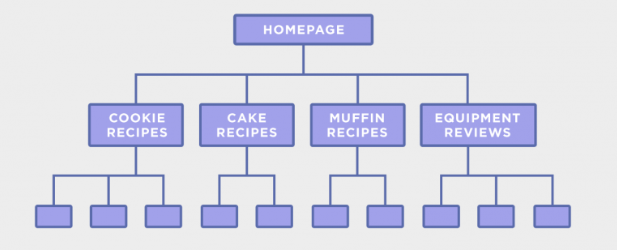30-second summary:
- Search engine rankings play a huge role in making your online store more visible to shoppers. If you rank higher on the SERPs, there’s a higher chance that you’ll rake in more sales.
- Shopify is one of the most recommended ecommerce platforms. Data from BuiltWith shows that usage of the CMS platform has doubled since 2017, and it currently has more than one million active websites.
- It offers a great backend administration that can be tailored. More important, it’s packed with SEO-friendly features right out of the box.
- Growth Rocket’s Lead Outreach Specialist, Stefanie Slclot, walks you through some key steps on how to master SEO for Shopify.
“If you build it, they will come”.
This nugget of wisdom may have worked for Kevin Costner’s character in ‘Field of Dreams’ when he’s spurned onward by a disembodied voice to pursue his dream of building a baseball field.
But in reality, this sort of advice can prove disastrous for entrepreneurs. After all, businesses rely on strategy, planning, and development for long-term success.
In today’s day and age where online shopping is the new normal, it takes more than just building a great store to draw in more customers.
Search engine rankings play a huge role in making your online store more visible to shoppers. If you rank higher on the SERPs, there’s a higher chance that you’ll rake in more sales.
Does Shopify have good SEO?
Shopify is one of the most recommended ecommerce platforms. Data from BuiltWith shows that usage of the CMS platform has doubled since 2017, and it currently has more than one million active websites.
Shopify is a great option for your online store because it offers easy backend administration and can be easily tailored to your specific requirements. More importantly, it’s packed with SEO-friendly features right out of the box.
Optimizing your Shopify store for success
Keep in mind that boosting organic traffic to your online store is different from optimizing other websites for SEO. In this guide, we’ll walk you through some key steps on how to master SEO for Shopify.
1. Simplify site structure
The way you organize content on your page is crucial to SEO success.
If shoppers can quickly find what they’re looking for on your site, they tend to spend more time on your page. Longer dwell times tell Google that your site offers value, which can give you a solid rankings boost.
To top that off, a logically structured site makes it easier for Google to crawl your website. Ideally, your site architecture should look something like this:

If you look at the diagram closely, you’ll see that your product pages (third row) are only a couple of clicks away from the home page (first row). In turn, organized and user-friendly web design makes it easy for visitors to find what they’re looking for.
Poor site structure, on the other hand, makes it harder for search engine spiders to find and index all the pages on your site.

Meanwhile, if your site architecture is interlinked, spiders can easily follow your links. A simple site architecture also means that link authority flows a lot easier from pages with more backlinks (your home page) to lower-ranking pages (product pages).
The graphic below shows what the site structure for a baking blog should look like:

2. Eliminate duplicate content
Duplicate content happens when similar content exists on two separate URLs. The page could either be on your site or someone else’s.
Duplicate content on Shopify can have a negative impact on your search performance. Search engines tend to be tolerant of internal site duplication. But if it appears as if you’ve copied text from another site, you could get hit by a search engine penalty.
The good news is that once you’ve wiped your site clean of duplicate content, you can improve your search rankings significantly.
Consider using tools like Copyscape to check for plagiarism and other external duplicate content. You can also conduct site audits to identify pages with similar content to other URLs.
Or maybe your site is due for a redesign or content update. Break free from duplicate content by writing a new copy.
3. Conduct keyword research
Keyword research is the foundation of SEO success. Here are a few tips on how to generate relevant keywords for your store:
- Export your keywords from Google Ads, and optimize search terms that generate the most revenue and have the highest conversion rate.
- Use Google Search Console to identify keywords with the most impressions and clicks.
- Conduct SEO competitor analysis on tools like Ahrefs. Generate the “Content Gap” report to single out keywords your competitors are ranking for.
- Analyze buyer personas and track search forums related to your products for topic inspirations and keyword ideas.
4. Optimize product pages
Now that you have a list of keywords and a simplified site structure, you can start optimizing your pages with your chosen search terms.
Start with your top pages first, such as your home page and main product collections. The first step to optimizing them is by writing title tags and meta descriptions. Here are some general guidelines for you to follow:
- Write unique title tags and meta descriptions for each page
- Include a keyword when appropriate
- Avoid truncating descriptions and follow the prescribed character limit guidelines
- Craft copy that will entice visitors to click
- Keep your descriptions brief yet descriptive
It also pays to add alt texts to your images. Since Google Images is the second largest search engine in the world, you can drive more traffic to your site through your images. That’s why it helps to add alt texts that describe what an image is about.
Once you’ve finished optimizing your titles, meta descriptions, and alt texts you can work on creating unique content to your product pages.
Keep in mind that your descriptions should be written from a user-focused POV. The best way to boost the relevance of your content is by discussing your product’s features and benefits.
5. Set up 301 redirect pages
301 redirects tell search engines that a page is no longer available and that it’s moved permanently to a new URL. After all, you don’t want your customers to move to your competitors after they land on a ‘404 Not Found’ page on your site.
The goal is for you to lead visitors to a new page, which you can do by creating a URL redirect through your Shopify admin portal. Follow these steps to add 301 redirects:
- Click Online Store > Navigation > URL Redirects
- Select Add URL redirect
- Type in the old URL in Redirect from and the new URL in Redirect to
- Click add
Keep in mind that before you can redirect users to the new URL, you’ll need to delete the existing webpage.
6. Boost page load speed
If your website loads slowly, it could hurt your Google rankings. That’s why you need to put forth the effort to make your site load quickly.
Check for your store’s site speed through tools like Google’s PageSpeed Insights or GTMetrix. On Shopify, however, you have limited options when it comes to boosting site speed. Here are a few factors you can work with:
- Choose a theme from the Shopify Theme Store that loads quickly
- Compress your images before uploading them to Shopify
- Install only the apps you need so they don’t slow down site performance
7. Build high-quality backlinks
Search engines rely on link building and outreach to determine how the community at large values your site. Think of backlinks as the word-of-mouth equivalent of SEO. With better quality backlinks, you can build your credibility and boost the organic traffic your shop receives.
Below is a list of some backlinks you can obtain for your site:
- Supplier/Manufacturer links – If you sell products made or supplied by other companies, they may have a policy that lets them link to your store. Reach out in case you’re missing a backlink opportunity.
- Competitor links – Use tools such as Link Intersect from Ahrefs to find out who’s linking to your competitors. You have a high chance of obtaining a backlink for sites that already link to other people in your industry.
- Influencer voices – Get in touch with industry leaders for interviews that could help you generate better links and content.
- Brand mentions – Find out where your brand is being mentioned through websites like mention.com. It may be possible for you to earn a backlink if they choose to include a link to your site along with the mention.
- Broken links – Keep an eye out for broken links or services similar to what you offer. When you find one, you could reach out to the site owner telling them to link to your site instead.
8. Focus on content marketing
Content is the reason why people visit your site. You may feel tempted to skimp on content marketing for your ecommerce site, but crafting content that delivers value adds to the overall user experience.
People who are ready to buy the moment they visit your shop make up only a small percentage of the marketing funnel. Publishing informational content like blog posts can help you educate people at different stages of the buyer’s journey. In turn, it can also increase the chances of them buying from you in the future.
Your content is a way for people to get to know your brand without selling to them directly. With well-written content, you can rank for more keywords and earn backlinks.
Your Shopify store automatically includes a blog called “News.” If you want to create a new blog, select Blog Posts > Create a new post > Create a new blog.
These steps will help you create a Shopify site experience that is also SEO-ready. Share your thoughts, tips, or queries in the comments section.
Stefanie Slclot is Lead Outreach Specialist at Growth Rocket.
The post Foolproof guide to optimizing Shopify for SEO appeared first on Search Engine Watch.
from Search Engine Watch https://ift.tt/2PnrCiw

No comments:
Post a Comment